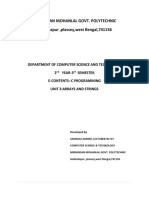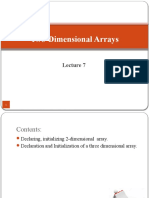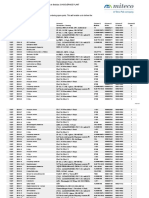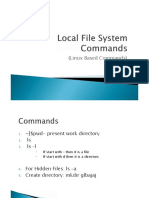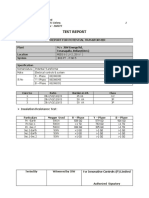0% found this document useful (0 votes)
29 views38 pagesArray Initialization Types - PSK
The document provides an overview of arrays in C programming, including definitions, initialization methods (static, dynamic, zero, and default), and examples of one-dimensional, two-dimensional, and three-dimensional arrays. It explains how to declare and initialize arrays, as well as how to process and display their elements. Additionally, it includes sample code for reading and displaying array values in reverse order.
Uploaded by
aravintharavinthasCopyright
© © All Rights Reserved
We take content rights seriously. If you suspect this is your content, claim it here.
Available Formats
Download as PPTX, PDF, TXT or read online on Scribd
0% found this document useful (0 votes)
29 views38 pagesArray Initialization Types - PSK
The document provides an overview of arrays in C programming, including definitions, initialization methods (static, dynamic, zero, and default), and examples of one-dimensional, two-dimensional, and three-dimensional arrays. It explains how to declare and initialize arrays, as well as how to process and display their elements. Additionally, it includes sample code for reading and displaying array values in reverse order.
Uploaded by
aravintharavinthasCopyright
© © All Rights Reserved
We take content rights seriously. If you suspect this is your content, claim it here.
Available Formats
Download as PPTX, PDF, TXT or read online on Scribd
/ 38
